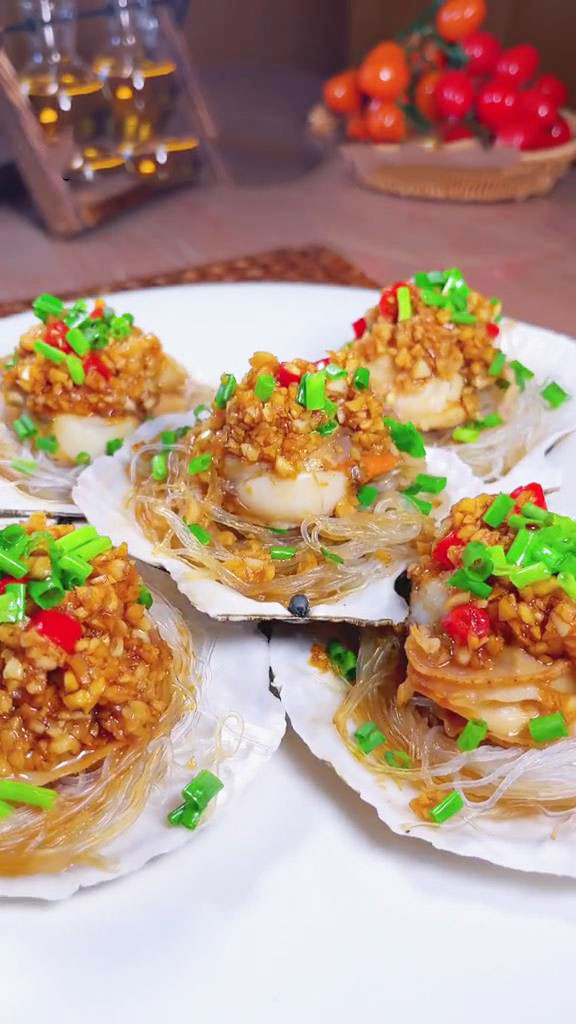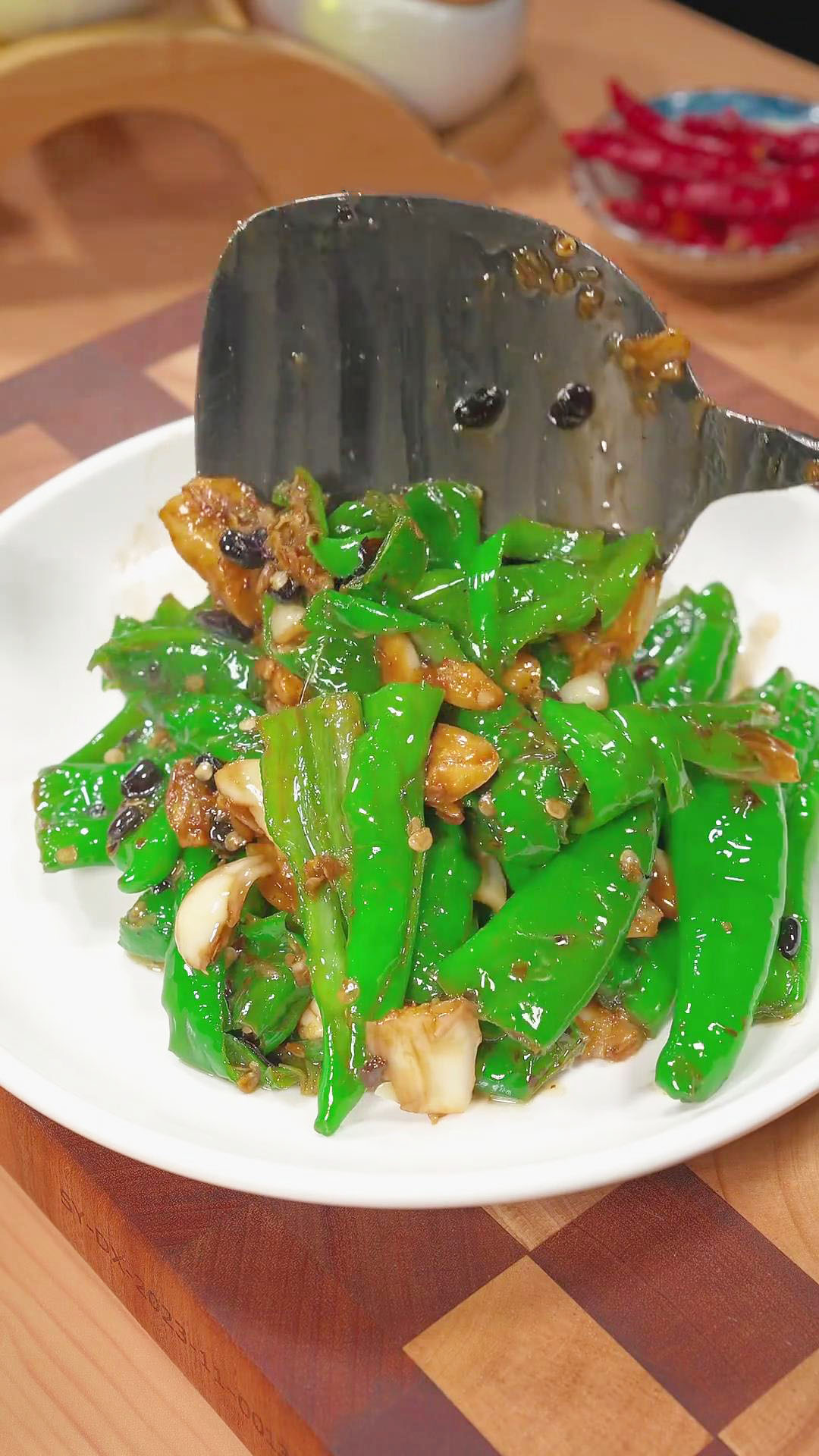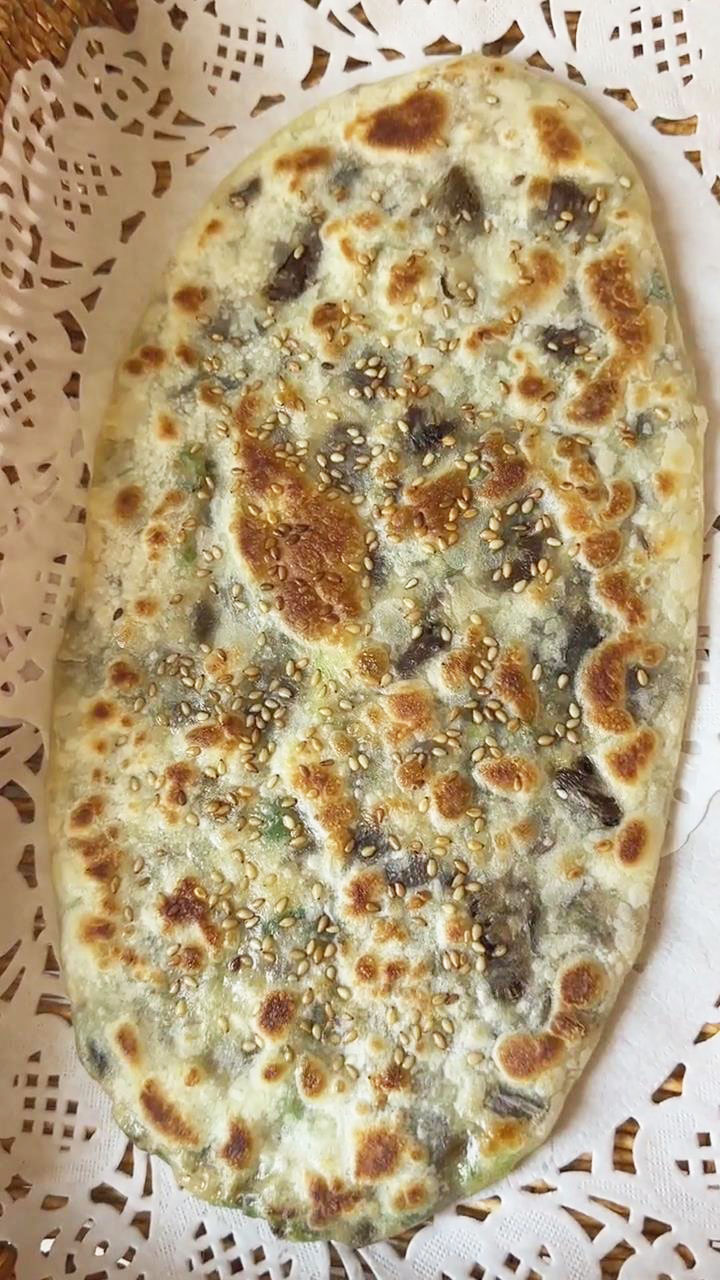The perfect topping for just about everything! Elevate your dishes with homemade crispy fried shallots made by deep-frying slices of shallots in a shallow pan. This staple condiment is fragrant, sweet, and aromatic. Pair it with eggs, noodles, pasta, biryani, fried chicken, and many more! It can be used as a topping, dressing, sauce, and flavor enhancer in almost any dish.
What To Love About Fried Shallots
Fried shallot is another Asian pantry staple, just like fried minced garlic, Chinese Five Spice Powder, and Chinese black bean sauce. It adds a bit of crunch and a warm caramelized flavor. Aside from adding taste and texture, it is an excellent alternative to regular onions if you need it for a certain recipe.
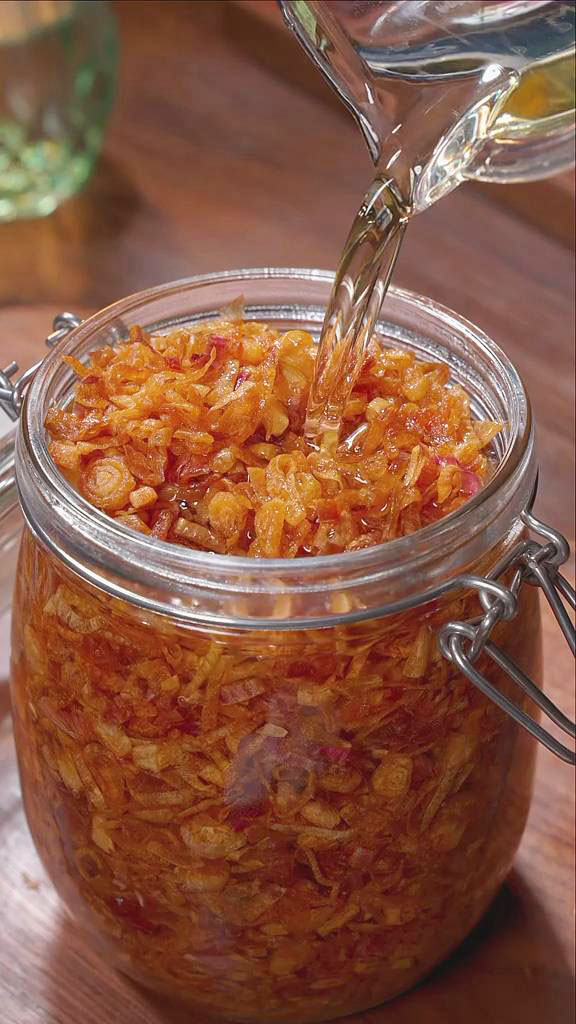
You can buy this in packs or jars in grocery stores. However, I always recommend making your own for a better taste and to guarantee quality. As I like to say, fresh is always better since you can carefully pick which ingredient you like to use.
Making fried shallots at home is considerably easy as long as you follow my recipe techniques, have the right kitchenware and ingredients, and of course, have the power to hold back those tears. Once you have a batch of fried shallots in your pantry, you can use it as a topping on chicken and steak, a garnish on soups and congee, and an add-on ingredient for salad, pasta, and eggs. Make every dish better with this single ingredient!
How To Serve Fried Shallots
You must be wondering – is it really worth it to make a batch of fried shallots to keep? Why yes, of course! As I mentioned, you can use it for just about everything if you want that crunch and oniony taste. Here are several ways to use fried shallots and not put a single piece to waste.
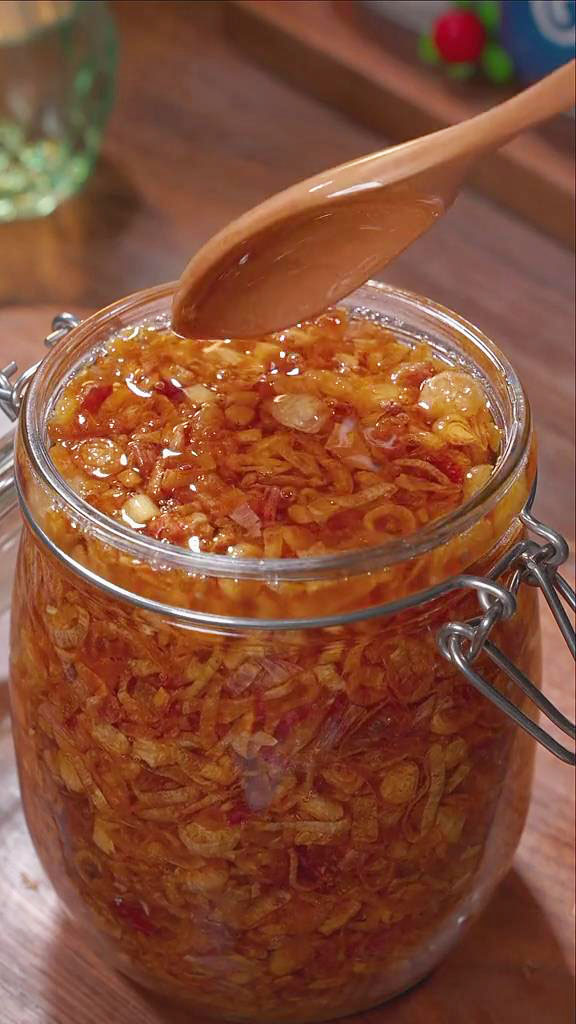
- Sprinkle it on steaks, casseroles, burgers, baked potatoes, and eggs
- Garnish on soups like beef wonton soup, stews, noodles, and congee
- Mix it with pasta, mac and cheese, salads, scrambled eggs, omelets, tortillas, and quesadillas
- Use it as a dipping sauce
- Incorporate it in dressings and sauces, such as lu rou fan
- Spread it on toasted buns, breads, and baked goods
Recipe Secrets For The Best Fried Shallots
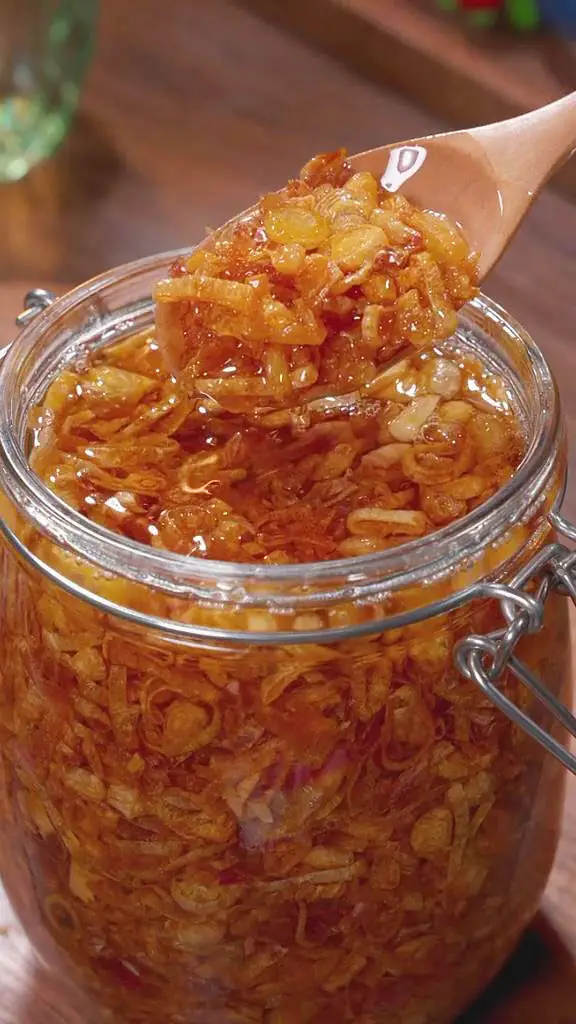
It may sound simple since this recipe entails only chopping and deep-frying the shallots. However, cooking fried shallots is a bit of a challenge since the outcome can become bitter, burned, or oil-sogged. So, before heading to the kitchen and making your own fried shallots, check out my foolproof recipe secrets below to further guide you.
- Start with cold oil: I know you know about the general rule of making your oil hot before frying. However, in this recipe, you have to cook the shallots starting with cold oil first. Then, you have to cook it until the oil becomes hot and starts to create bubbles. This technique guarantees an evenly cooked and caramelized shallot.
- Never leave it out of your sight: Although it may take some time to fry them, never leave this cooking in your kitchen and keep an eye on it. Otherwise, you might end up with burned shallots in a blink of an eye. Besides, you also need to keep stirring the shallots to break off the clumps and ensure even cooking.
- Remove excess oil: You can remove excess oil with a strainer spatula, a slotted spoon, or a mesh strainer. Afterward, I recommend placing it in a baking tray lined with parchment paper or paper towel for better oil absorption. In addition, the best time to remove the shallots is when it is lightly golden brown. Once you remove it from the oil, it will still continue to cook. So, if you remove it too late when it is darker in color already, it might cook even further and taste bitter.
- Keep the oil: Remember, the oil serves a purpose too. The excess oil is poured into a jar once it cools. Moreover, it is also mixed with the fried shallots after both cool down. You can use the oil as a topping and an onion-infused oil for stir-fried dishes, noodles, and soups.
- Slice the shallots evenly: To ensure that the shallots are cooked evenly, make sure they are cut into equal slices. If they are not cut evenly, some shallots may be crispy while some may not. You can cut it at about 2mm thick. Alternatively, you can use a mandoline, a kitchen utensil to help you slice properly. Cutting them crosswise or lengthwise is perfectly fine.
- Fry on low heat: When starting with cold oil, fry the shallots on low heat. Frying on low heat gives the shallots ample time to remove moisture without it turning brown too fast. In this way, you can get crispy shallots instead of soggy. One of the best ways to know if the shallots are crispy is when the oil bubbles settle. When there are bubbles, it means there is still some moisture left. When there are no bubbles left, take them out of the pan immediately. If you let the shallots submerge too long in oil with no bubbles anymore, the shallots will absorb the oil and become soggy and oily.
- Store in an airtight container: Another factor that can make the fried shallots soggy is when you don’t use an airtight container. If the fried shallots absorb moisture from the air, they will turn soft and soggy. So, make sure to use a sealed glass jar.
- Season with salt: Adding salt to shallots and onions is a no-brainer. You can sprinkle some salt on the sliced shallots before frying in order to draw out moisture. The salt seasons them and draws out moisture, making them crisp up faster.It also helps enhance the flavor by giving it a deeper and browner flavor. In the recipe, you can add a pinch of salt and let it sit for about 10 minutes before frying.
- High-smoke point oil: To reduce the amount of oil oxidized and to cook at higher temperatures, use cooking oils with a high smoke point. Avocado, peanut, canola, and corn oil are among the oils with a high smoke point. For a healthier alternative, use olive, avocado, sesame, or safflower oil. The best kind of oil for a neutral taste is peanut, soybean, or vegetable oil. If you are making a large batch of fried shallots, choose your favorite and trusted oil because believe me, you will be eating this a lot!
What You Need To Make Fried Shallots
Deep-frying requires a shallow pan to keep a large amount of oil and shallots without overflowing or spilling out of the pan. With a shallow pan, you can stir with ease without worrying about spills from hot oil. In addition, I highly recommend using a strainer spatula or a mesh sieve to help you remove excess oil from the shallots.
You can also use paper towels to blot the freshly fried shallots to remove oil faster. Lastly, don’t forget to pick out the freshest bunch of shallots for better flavor and results. Here’s a complete list of what you need to make fried shallots.
Kitchenware
- Knife and chopping board
- Mixing bowl for rinsing
- Shallow pan for deep-frying
- Spatula or strainer spatula
- Baking sheet with parchment paper
- Glass jar for storage
Ingredients
- 1000g shallots
- Water for rinsing the sliced shallots
- 1000ml cold oil
How To Make Fried Shallots
Make this recipe in only 10 easy steps. In a nutshell, the shallots are cleaned and cut for deep-frying. Then, the shallots are deep-fried in oil and cooled before storage. Here’s a quick recipe video on Instagram and Tiktok for easy reference.
Prepare the shallots by peeling the skin off and washing them with water. Drain the water thoroughly.

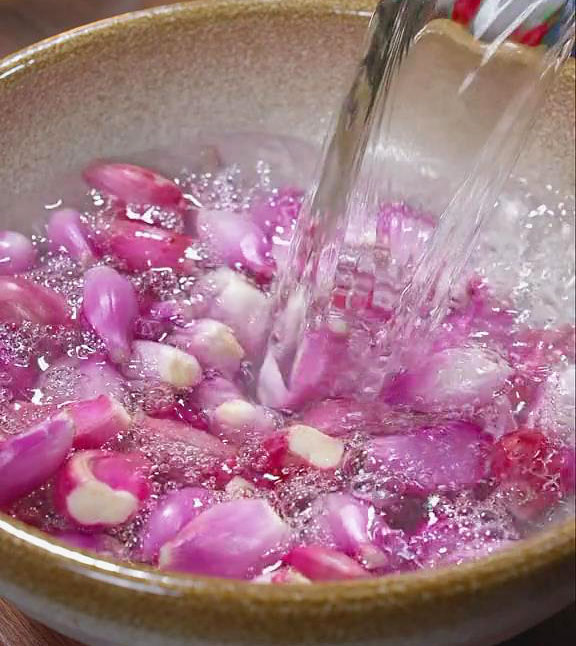
Then, evenly slice the shallots by cutting them crosswise at about 2mm thick.

Next, prepare a pan with unheated oil, just enough for deep-frying all the sliced shallots. Combine the shallots with oil and fry on low heat.

Continuously stir the shallots, making sure there are no clumps. Wait until the shallots float to the top of the oil and turn lightly golden brown.

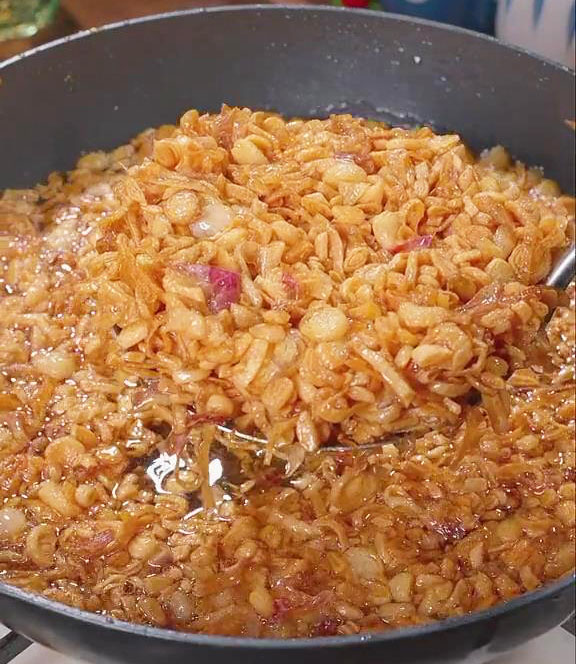
Then, immediately transfer shallots to a baking sheet lined with parchment paper or paper towel.
Spread the shallots evenly on a single layer and let it cool.
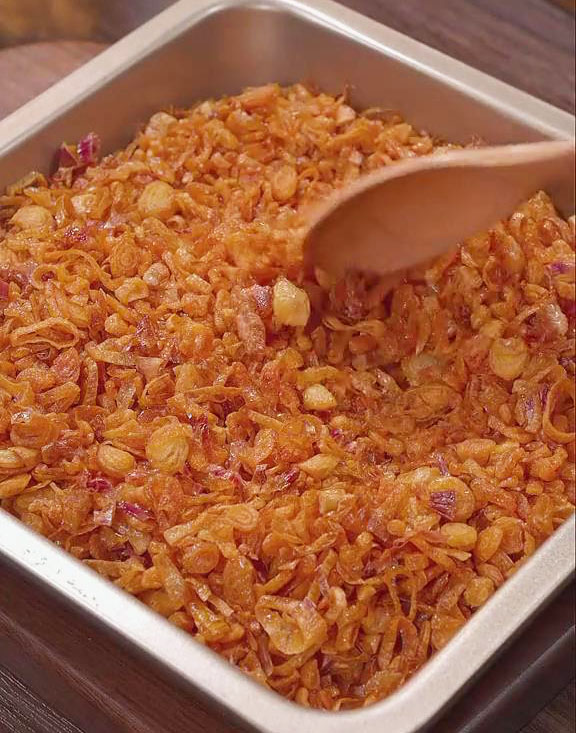
Once completely cooled, transfer the fried shallots to your preferred dry glass jar and pour in the excess cooled oil as well. You can also keep the extra oil in a separate glass jar to use as a shallot-infused oil.
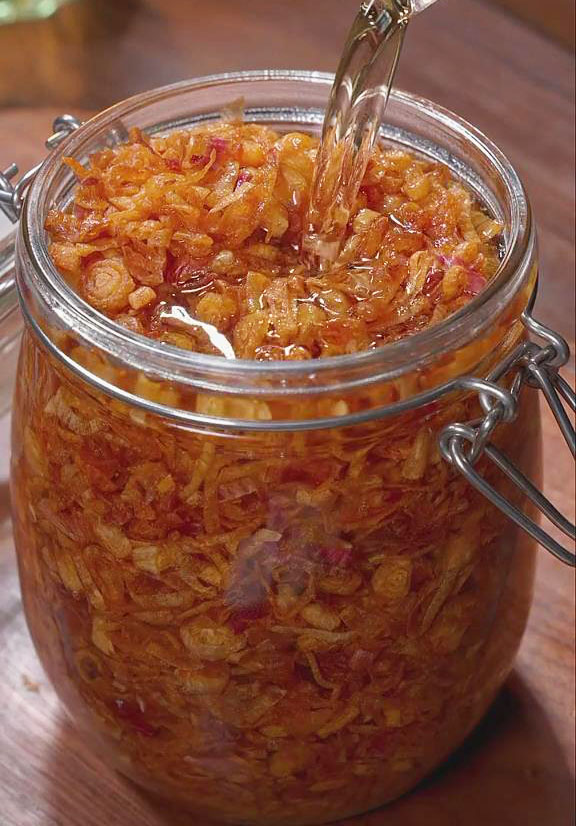
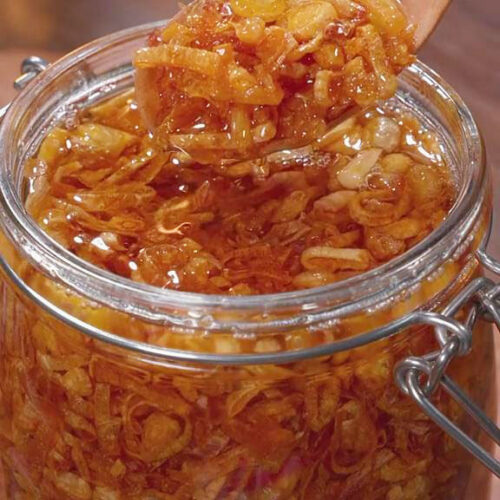
Perfectly Crisp Fried Shallots In Oil
Equipment
- Knife and chopping board
- Mixing bowl for rinsing
- Shallow pan for deep-frying
- Spatula or strainer spatula
- Baking sheet with parchment paper
- Glass jar for storage
Ingredients
- 1000 g shallots
- Water for rinsing the sliced shallots
- 1000 ml cold oil
Instructions
- Prepare the shallots by peeling the skin off and washing them with water. Drain the water thoroughly.
- Then, evenly slice the shallots by cutting them crosswise at about 2mm thick.
- Next, prepare a pan with unheated oil, just enough for deep-frying all the sliced shallots.
- Combine the shallots with oil and fry on low heat.
- Continuously stir the shallots, making sure there are no clumps.
- Wait until the shallots float to the top of the oil and turn lightly golden brown.
- Then, immediately transfer shallots to a baking sheet lined with parchment paper or paper towel.
- Spread the shallots evenly on a single layer and let it cool.
- Once completely cooled, transfer the fried shallots to your preferred dry glass jar and pour in the excess cooled oil as well. You can also keep the extra oil in a separate glass jar to use as a shallot-infused oil.

